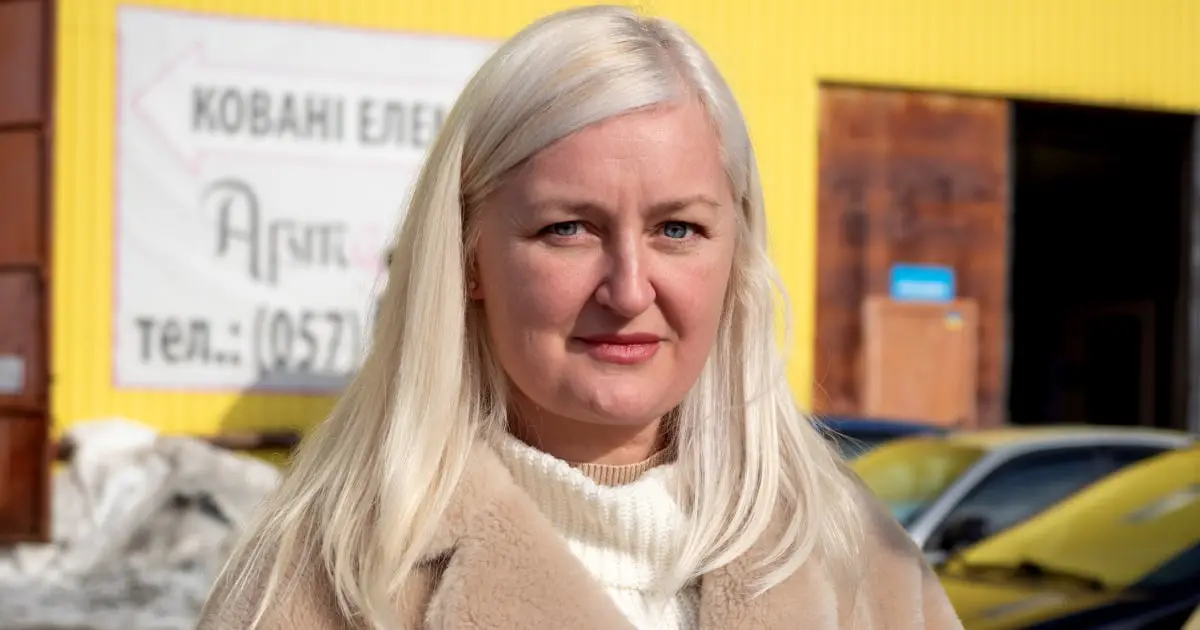KHARKIV, Ukraine — With her platinum hair, stylish clothes and manicured nails, Tetyana Bednyak cuts a striking figure in a hardware store otherwise populated by burly men in drab builder’s attire.
And unlike most other shoppers, Bednyak, 45, is looking for equipment for trench warfare.
An advertising company owner, she is one of thousands of ordinary Ukrainians donating goods and cash to their country’s military as it squares up to Russia’s colossal war machine.
Charities around the world collect money for veterans, but few raise cash to buy basic equipment for active soldiers. Ukraine’s civilian fundraising is a strong example of the challenge it faces should Russia’s mighty military — the world’s second most powerful — invade.
“Our soldiers are highly motivated … but they can’t just rely on a morale boost. They need modern tools,” she told NBC News.
A little while later, Bednyak stood in the store’s icy parking lot in the east Ukraine city of Kharkiv, just 25 miles from the Russian border. Nearby, uniformed soldiers quickly loaded a generator, chainsaws and other goods they had paid for into the back of a van and drove away.
She and her friends collect around $10,000 a month in donations for the military and have bought drones, solar panels and spare parts, among other things.
Their efforts come as at least 100,000 Russian troops mass around Ukraine, hinting at the enormous disparity between what Moscow spends militarily and what the Ukrainian government in Kyiv can afford to spend on its soldiers.
On Friday, White House national security adviser Jake Sullivan suggested that the threat of such an incursion is “now immediate enough” to warn Americans still in Ukraine to leave in the next 24 to 48 hours.
At just under $6 billion, Ukraine’s 2020 defense budget was one-tenth the size of Russia’s, according to the Stockholm International Peace Research Institute.
That’s led to some ingenious and thrifty fundraising by ordinary Ukrainians. Supermarkets, hotels and other businesses across Ukraine display collection boxes for military aid and almost every town has a fundraising group coordinating donations.
Yuriy Moskalenko, one prominent volunteer fundraiser, estimates that around $5 million was raised nationally last year, although there is no accurate tally, given that many collection efforts are small and local.
Some Ukrainians have raised hundreds of thousands of dollars through crowdfunding Bitcoin, CNBC reported, citing research from the blockchain analytics firm Elliptic.
But civilians are not just stepping in with money. They’re also helping with procurement to speed up purchases that could otherwise get bogged down in government spending bureaucracy.
“Our army is funded by taxpayers, but there is a lot of equipment that civilians can buy faster than the state,” Bednyak said. “Ukraine inherited from the USSR a very poor and poorly developed army.”
At 255,000 active personnel, Ukraine’s armed forces are a fraction of Russia’s 1.15 million on duty, according to armedforces.eu.
Tattoo artist Olena Vovk, 46, has also been doing her part by turning old munitions from Russia’s 2014 invasion of Ukraine into souvenirs and works of art, which she sells to raise money for the military.
“We started in 2014 when we were helping the Ukrainian army. We started taking these shells with us from the front line,” she said, sitting among her creations in a shop.
Old rocket launchers, missile shells and weapon cases painted in vivid colors and depicting Ukrainian folk stories may look incongruous but have sold relatively well, including among Americans of Ukrainian origin, she said.
Several participants at a recent rally for Ukrainian unity in Kharkiv carried bullet-case keychains she had painted in the colors of the Ukrainian flag.
“When the war started in 2014, we all defended the country, especially Kharkiv, to which the war was very close,” Vovk said, wearing a pendant in the shape of a trident, Ukraine’s national symbol,
“Some went to the front line as soldiers, some helped to volunteer carry aid to the soldiers — because in 2014 they had nothing.”
Ukrainian forces have improved considerably since then, experts say, and Western weapons and cash have poured into the country in recent weeks. The US says it has sent thousands of pounds of “lethal aid,” including ammunition, while Britain has sent anti-tank weapons.
Vovk isn’t the only Ukrainian repurposing old military hardware. At a tank facility a short drive away, engineers upgrade rotting Soviet-style tanks and turn them into what they claim are modern fighting machines capable of taking on Russia.
Dozens of tanks and armored personnel carriers sat in rows in a hangar, hazy with welding smoke and exhaust fumes, as a crane lugged a tank gun turret through the building’s cavernous interior.
“If we compare two tanks, the Russian T-72B3B and our T-64 model 2022, which has been upgraded, our tank is much better,” said the facility’s technical director, Vadym Yavnikov, 34, standing in front of a newly refurbished tank.
Yet privately many Ukrainians admit they stand little chance against Russia in the type of conventional warfare in which tanks are deployed.
Volunteer fighters and soldiers told NBC News they were gearing up for a more guerrilla-style campaign of resistance against an occupying army if the Russians invade.
Ukraine’s pockets may not be deep, they say, but they will make Russia pay.

